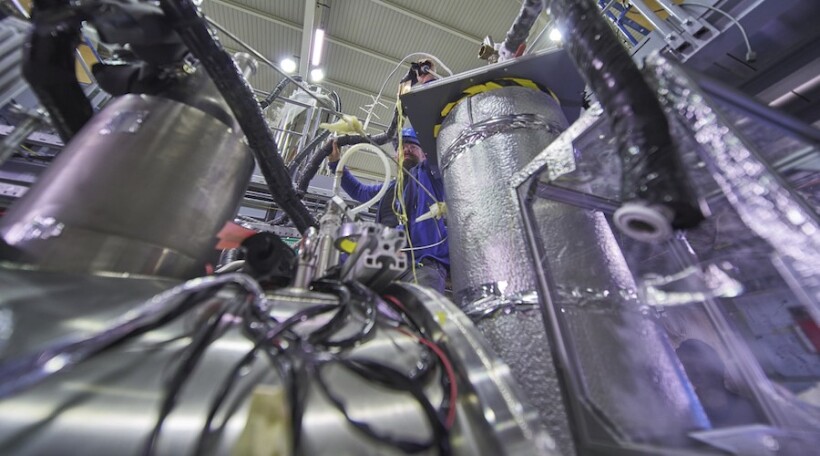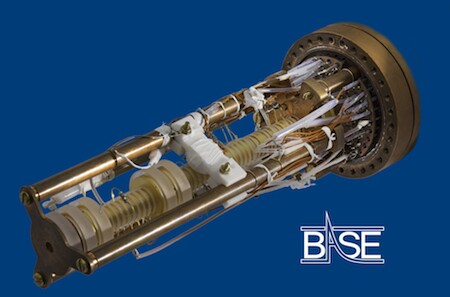Antimatter measurement draws unjustified hype

The BASE collaboration’s Stefan Ulmer tinkers with the apparatus for measuring the properties of antimatter.
Maximilien Brice, Julien Ordan/CERN
When a pair of mid-October press releases summarized a stride of more than two orders of magnitude in precisely measuring antiproton magnetic moment, journalists worldwide zeroed in on one line in the release
Despite worldwide journalistic enthusiasm, that apparent paradox is old news. It was a half-century ago, one analyst explains
That write-up does point briefly in the same direction as Smorra’s startling statement. It observes that if “matter and antimatter are created and destroyed together, it seems the universe should contain nothing but leftover energy.” But it also recommends attention to CERN’s ALPHA collaboration, with a research approach completely different from measuring magnetic moment. In August in Nature, the collaboration reported results from a new measurement of antihydrogen’s hyperfine spectrum. Those results, according to an editor’s summary
Other experiments in this physics domain look at mass and even whether antimatter “falls up.” It’s a wide domain. The existence-of-the-universe paradox does frame it as an overall physics challenge. But the news this fall is about one marvelous advance, which took place at CERN’s antiproton decelerator facility, in the empirical quest to resolve it.
Sensationalized research news
Nonetheless, media reports about the measurement advance trumpeted the existence issue. “Our existence is one giant, inexplicable head scratch,” the New York Post reported
A Forbes.com headline declared
The India Times‘s headline writer somehow found

Researchers used a Penning trap to pin down the antiproton’s magnetic moment.
Stefan Sellner, Fundamental Symmetries Laboratory, RIKEN, Japan
Some of the coverage projected personal feelings and beliefs onto the science. Space.com headlined
The UK’s Express sensationalized
“Small sensation” research
Though journalists will never stop seeking whale-size news hooks, much can be made not just of the mysterious existence-of-the-universe issue but of the plainly vivid marvelousness of the research effort itself. Consider a passage from the German press release
Antiprotons are artificially generated at CERN and researchers store them in a reservoir trap for experiments. The antiprotons for the current experiment were isolated in 2015 and measured between August and December 2016, which is a small sensation as this was the longest storage period for antimatter ever documented. Antiprotons are usually quickly annihilated when they come into contact with matter, such as in air. Storage was demonstrated for 405 days in a vacuum, which contains ten times fewer particles than interstellar space. A total of 16 antiprotons were used and some of them were cooled to approximately absolute zero.
Did anybody in the popular media talk that way about the research effort by Smorra and colleagues? Well, yes, in fact—at least one. Gizmodo ran a piece
Steven T. Corneliussen is Physics Today‘s media analyst. He has published op-eds in the Washington Post and other newspapers, has written for NASA’s history program, and was a science writer at a particle-accelerator laboratory.